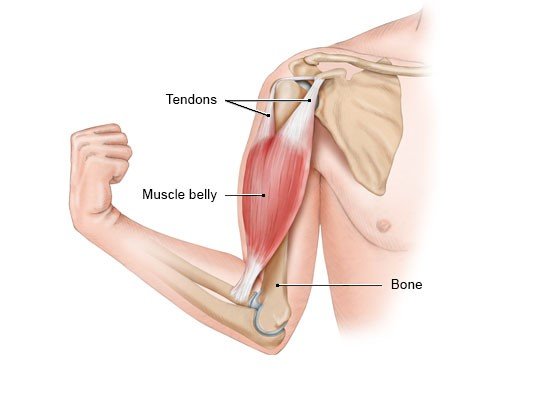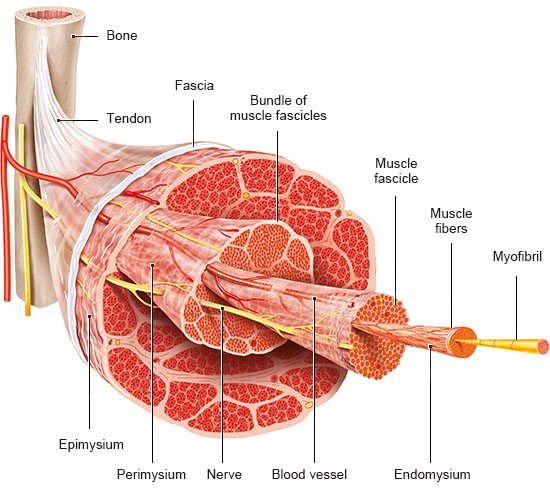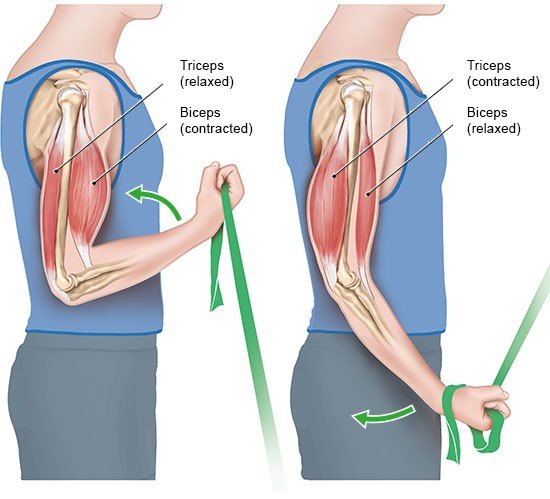What do striated muscles do?
Striated muscles allow us to move our body. They are usually joined by tendons to our bones, which is why they are also called skeletal muscles. Striated muscles make up a large part of our body weight.
Typical examples include the muscles in our arms and legs. But the muscles in the tongue, larynx and throat, some facial muscles, and the diaphragm are also striated muscles.
We can consciously control the striated muscles using signals sent by our central nervous system.
Under a microscope you can see the horizontal lines on the individual muscle cells that give the muscles their name. The striated muscle cells are also called muscle fibers because of their thread-like form. A single muscle fiber can be up to several centimeters long.
Muscles do their work by contracting, or tensing. The muscle fibers have little “powerhouses” called myofibrils in them that are responsible for the contractions.



